Potatoes Au Gratin
This post may contain affiliate links. Read my full disclosure policy.
Creamy, cheesy, and indulgent, this potatoes au gratin recipe is perfect for holiday meals or any dinner that calls for something special.
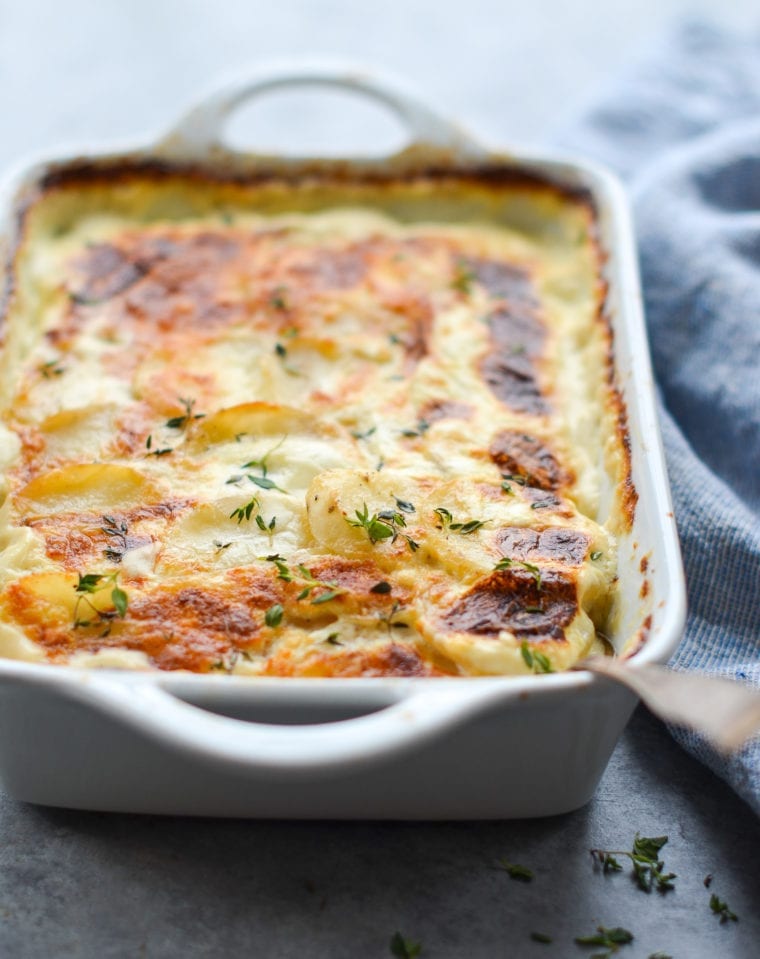
This wonderful classic potatoes au gratin recipe is one of my go-to Thanksgiving side dishes, but it’s also perfect for any special dinner. It involves layering thinly sliced potatoes with heavy cream and grated cheese in a casserole dish, and then baking until the cream thickens and blankets the potatoes in a rich, creamy sauce. This dish is definitely worthy of a special occasion, but honestly, enjoying this au gratin potatoes recipe feels like a special occasion all on its own.
“I only gave this five stars because I couldn’t give it 10 stars. This may be my favorite side dish ever. It is amazing!”
What You’ll Need To Make Potatoes Au Gratin
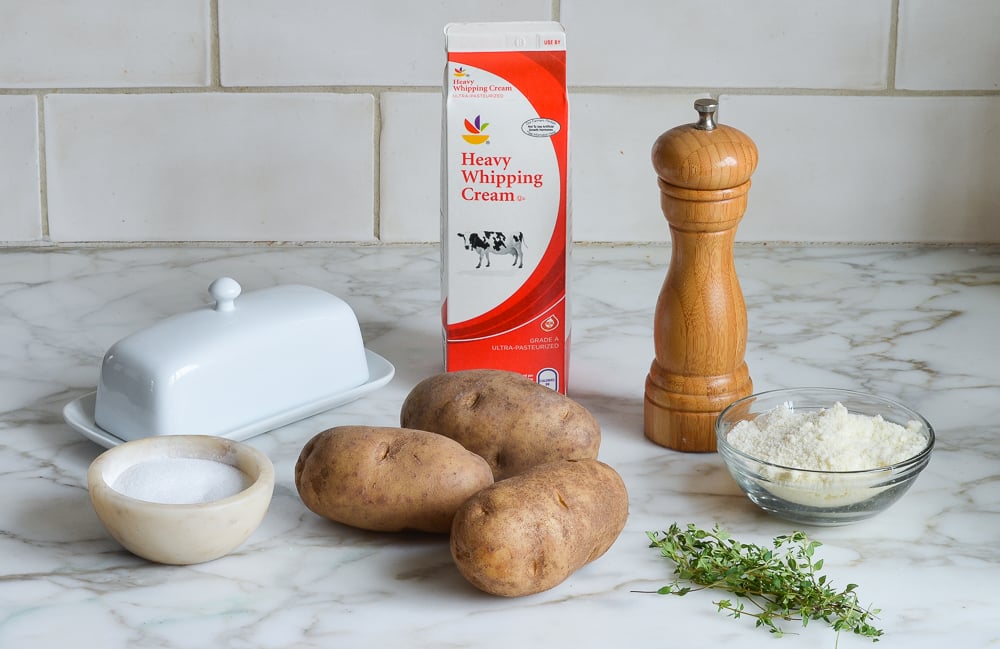
- Russet Potatoes: Their high starch content makes them ideal for absorbing the cream and creating a soft, melt-in-your-mouth consistency. Russet potatoes are also ideal for making mashed potatoes, baked potatoes, and twice-baked potatoes. Yukon gold potatoes are not recommended.
- Salt: Enhances the natural flavors of the potatoes and balances the richness of the cream and cheese.
- Black Pepper: Adds a mild, warming heat that complements the creamy, cheesy layers.
- Finely Grated Parmigiano-Reggiano: Provides a salty, nutty depth that melts into the potatoes, adding flavor and texture. Be sure to use authentic Parmigiano Reggiano (not cheese labeled as Parmesan), which can be identified by its rind or labeling. If it’s unavailable, Pecorino Romano is a flavorful substitute.
- Heavy Cream: Creates the velvety sauce that makes this dish creamy and indulgent. You may be tempted to cut calories by using half & half or milk instead of cream. Please don’t! This is one of those recipes that requires heavy cream to thicken up.
- Fresh Thyme (Optional): Adds a hint of herbal freshness to balance the rich, creamy flavors.
- Jump to the printable recipe for precise measurements
Step-by-Step Instructions
Begin by slicing the potatoes as thinly and uniformly as possible. You can use a mandoline slicer if you have one, but I never bother. (Pro tip: When slicing wobbly potatoes, it helps to cut a thin slice along the length of the potato, then turn the potato cut-side down on a cutting board so that it sits flat.)
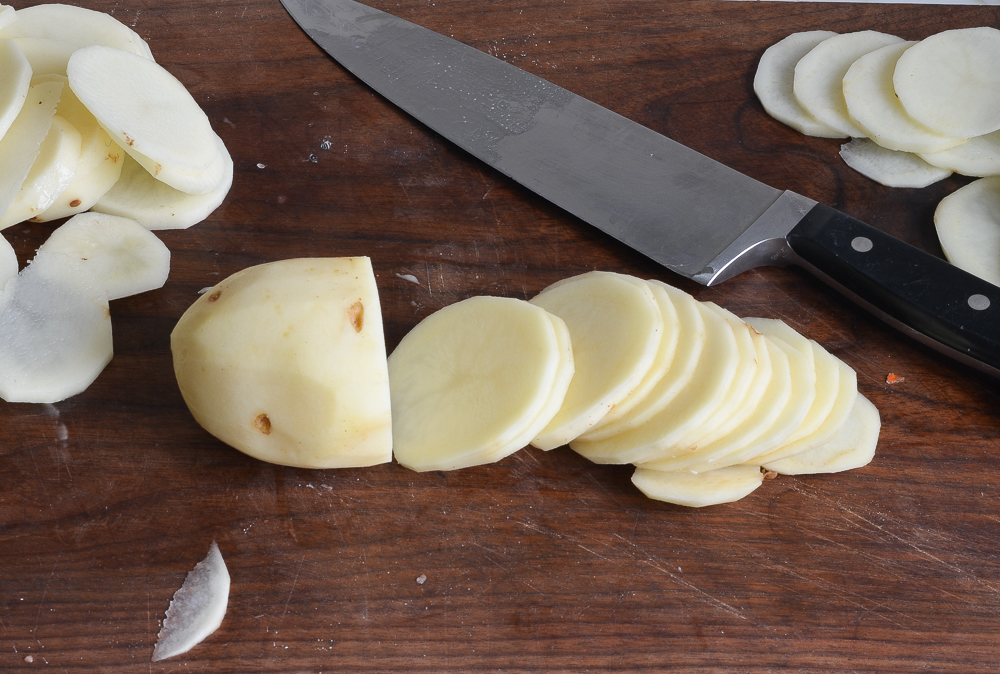
Place the potatoes in a large bowl and toss with the salt and pepper. Be sure the potatoes are evenly coated.
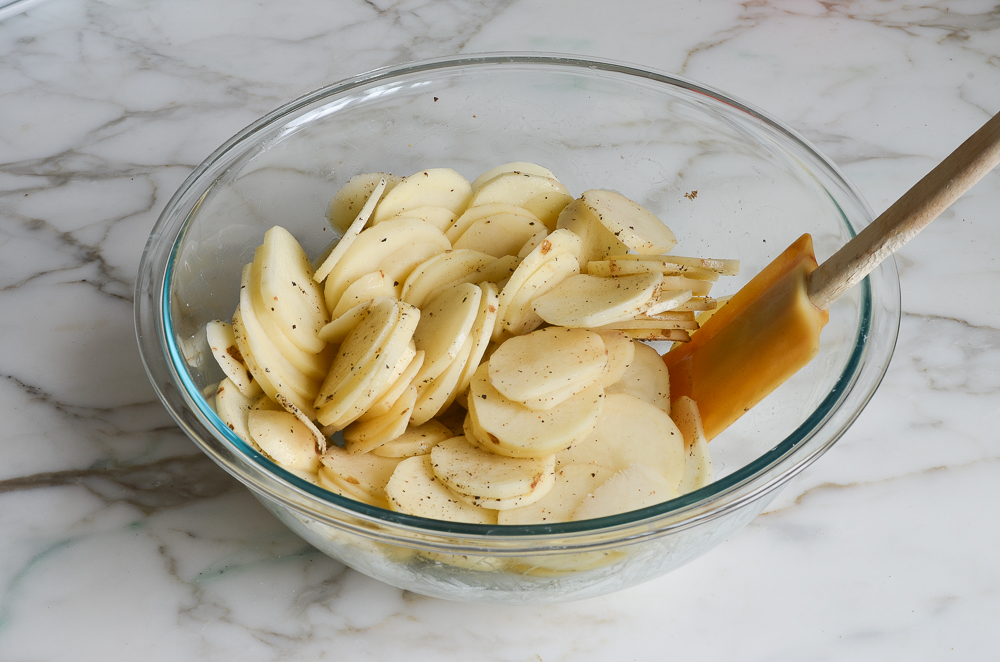
Butter a 2-quart baking dish. Arrange some of the potato slices, edges overlapping, in a single layer on the bottom of the dish.
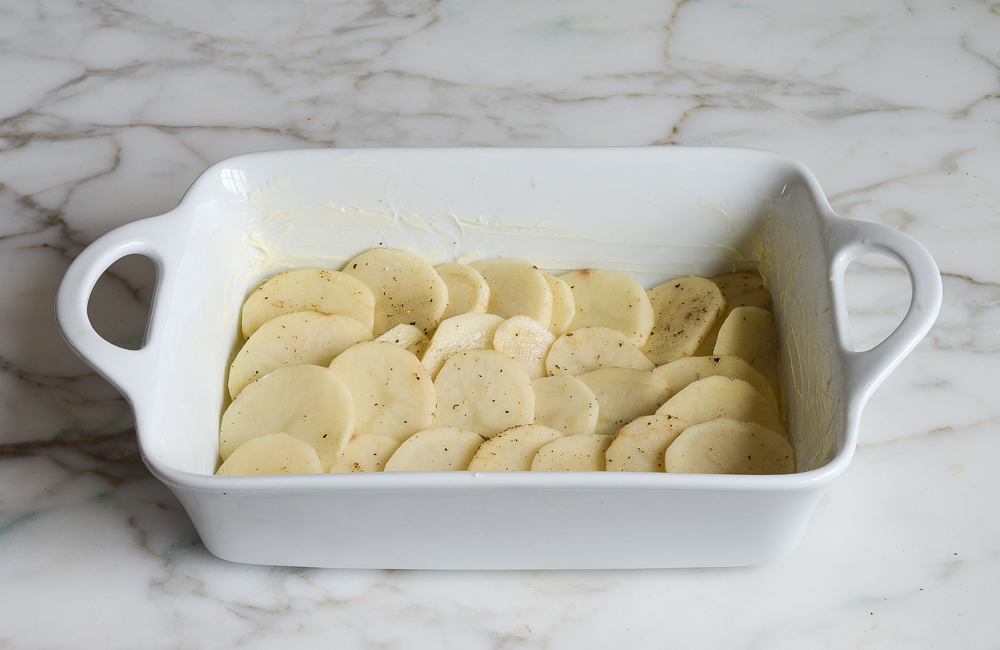
Sprinkle a quarter of the cheese over the potatoes.

Pour a quarter of the cream over top.
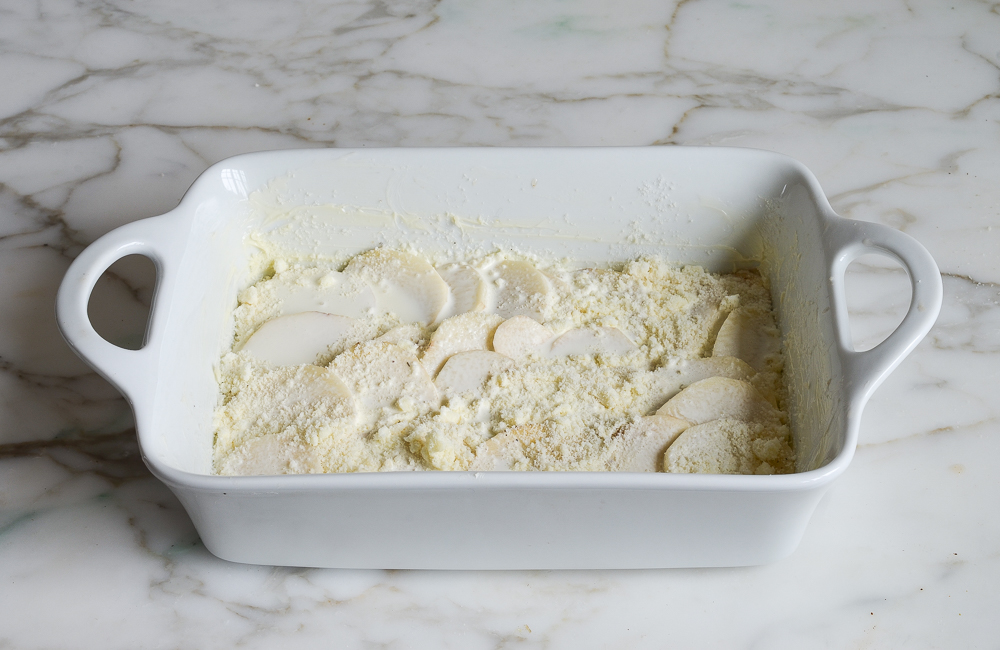
Repeat with the remaining potatoes, cheese, and cream, forming four layers. Pour any leftover cream over top.
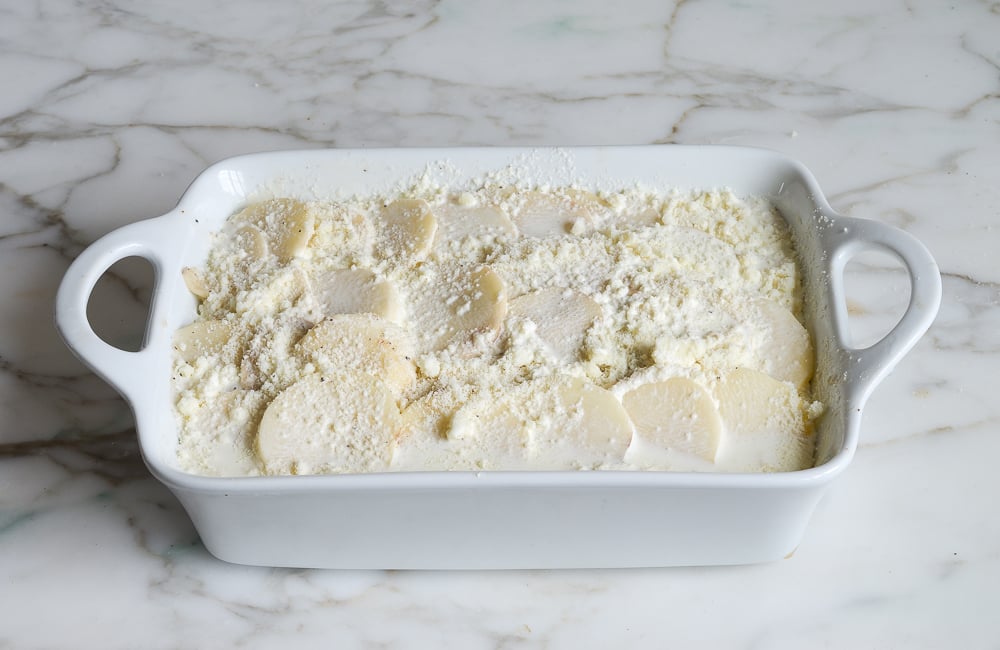
Place in the preheated oven and bake, uncovered, for 60 to 75 minutes, or until the potatoes are tender when pierced with a knife and golden brown on top. (Don’t cover the dish with foil or you won’t get the beautiful coloring on top.) The top layer of the potatoes should be golden by the time the dish is done baking but if you want just a bit more browning, feel free to stick the baking dish under the broiler for 1 to 2 minutes; just keep a close eye on it so it doesn’t burn.
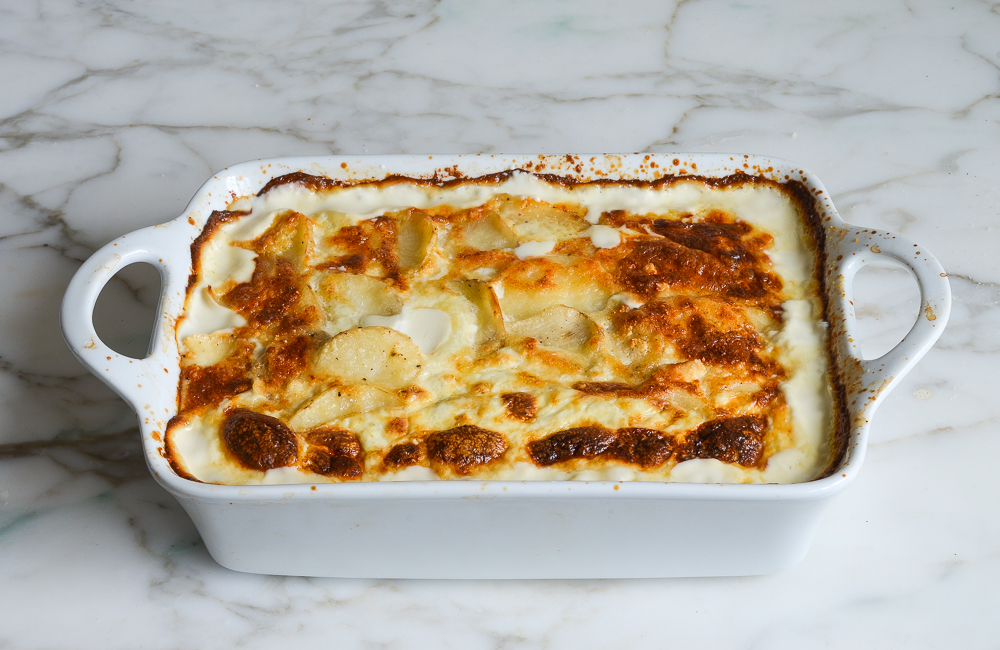
Sprinkle with fresh thyme leaves, if using, and serve. (Note: If you have a large crowd coming and plan to double the dish, you’ll get the best results by baking it in two 2-quart baking dishes instead of one larger dish. The potatoes will cook more evenly that way.)
Frequently Asked Questions
Scalloped potatoes are typically made with thinly sliced potatoes baked in a simple cream or milk sauce, while potatoes au gratin include cheese, like Parmesan, Gruyere, or Cheddar, in the sauce and often have a crispy, cheesy topping. The addition of cheese is the key difference between the two dishes.
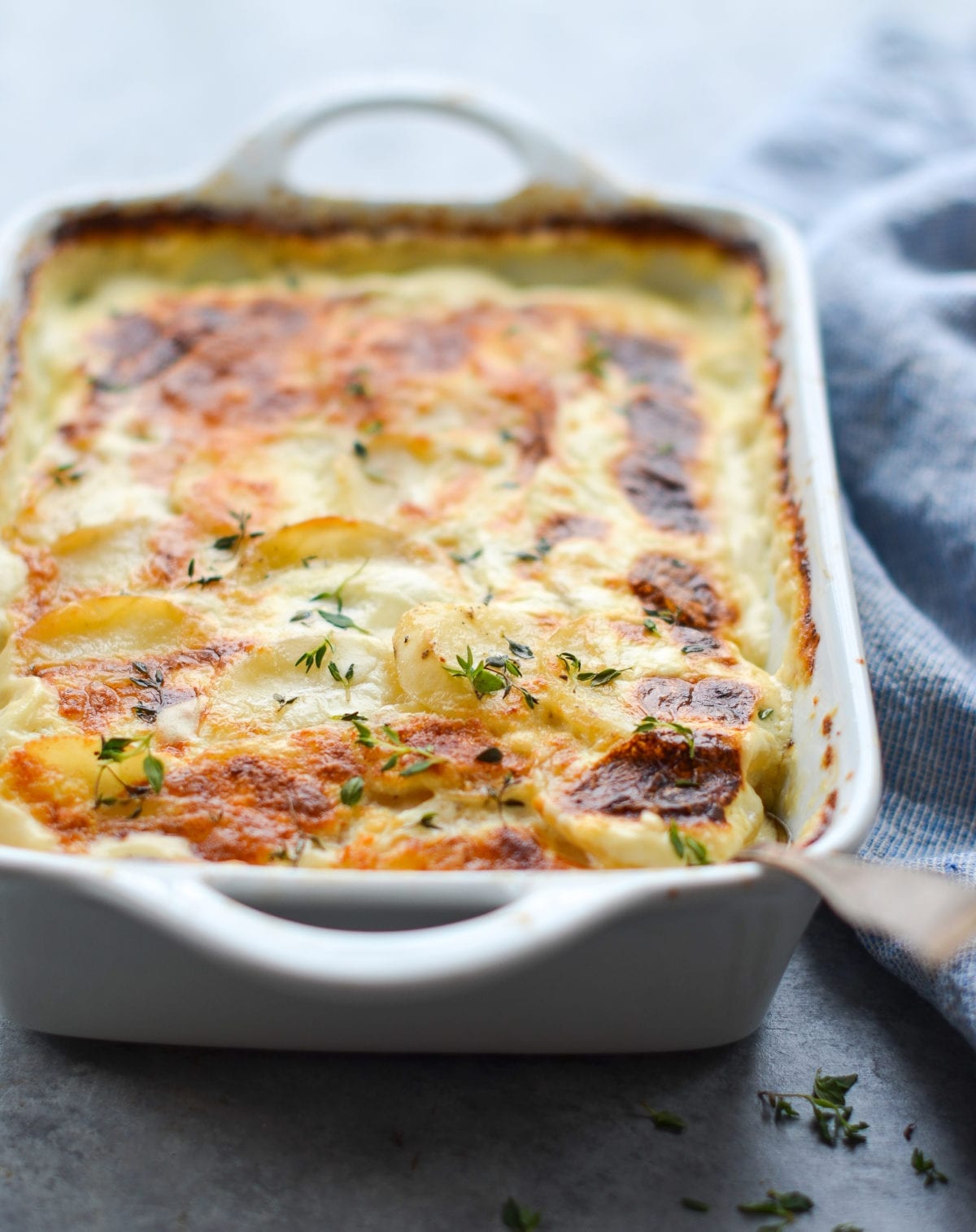
You May Also Like
Potatoes Au Gratin
Creamy, cheesy, and indulgent, this potatoes au gratin recipe is perfect for holiday meals or any dinner that calls for something special.
Ingredients
- Butter to grease the baking dish
- 2½ pounds Russet potatoes (3 to 4), peeled and sliced very thin
- 1½ teaspoons salt
- ¼ teaspoon freshly ground black pepper
- 1 cup (4 oz) finely grated Parmigiano-Reggiano
- 2¼ cups heavy cream
- Fresh thyme, for serving (optional)
Instructions
- Preheat the oven to 350°F and set an oven rack in the middle position. Grease an 8-inch (or 2-quart) baking dish with butter.
- In a large mixing bowl, toss the potatoes with the salt and pepper until evenly coated.
- Arrange some of the potato slices, edges overlapping, in a single layer on the bottom of the prepared baking dish. Sprinkle a quarter of the cheese over the potatoes, and then pour a quarter of the cream over the cheese. Repeat with the remaining potatoes, cheese, and cream, forming 4 layers. Pour any leftover cream over top.
- Place in the oven and bake, uncovered, for 60 to 75 minutes, or until the potatoes are tender when pierced with a knife and golden brown on top. Let the dish settle on the counter for about ten minutes. Sprinkle with fresh thyme, if using, and then serve.
- Make Ahead: If absolutely necessary, this dish can be assembled a day ahead and covered tightly with plastic wrap (pressing the wrap directly against the potatoes so they don’t discolor too much). Store in the refrigerator and bake before serving. Note that the potatoes on top will still discolor a bit in the fridge, but it shouldn't be noticeable after baking.
Nutrition Information
Powered by ![]()
- Per serving (8 servings)
- Calories: 399
- Fat: 29 g
- Saturated fat: 18 g
- Carbohydrates: 28 g
- Sugar: 3 g
- Fiber: 2 g
- Protein: 9 g
- Sodium: 518 mg
- Cholesterol: 101 mg
This website is written and produced for informational purposes only. I am not a certified nutritionist and the nutritional data on this site has not been evaluated or approved by a nutritionist or the Food and Drug Administration. Nutritional information is offered as a courtesy and should not be construed as a guarantee. The data is calculated through an online nutritional calculator, Edamam.com. Although I do my best to provide accurate nutritional information, these figures should be considered estimates only. Varying factors such as product types or brands purchased, natural fluctuations in fresh produce, and the way ingredients are processed change the effective nutritional information in any given recipe. Furthermore, different online calculators provide different results depending on their own nutrition fact sources and algorithms. To obtain the most accurate nutritional information in a given recipe, you should calculate the nutritional information with the actual ingredients used in your recipe, using your preferred nutrition calculator.
Gluten-Free Adaptable Note
To the best of my knowledge, all of the ingredients used in this recipe are gluten-free or widely available in gluten-free versions. There is hidden gluten in many foods; if you're following a gluten-free diet or cooking for someone with gluten allergies, always read the labels of your ingredients to verify that they are gluten-free.

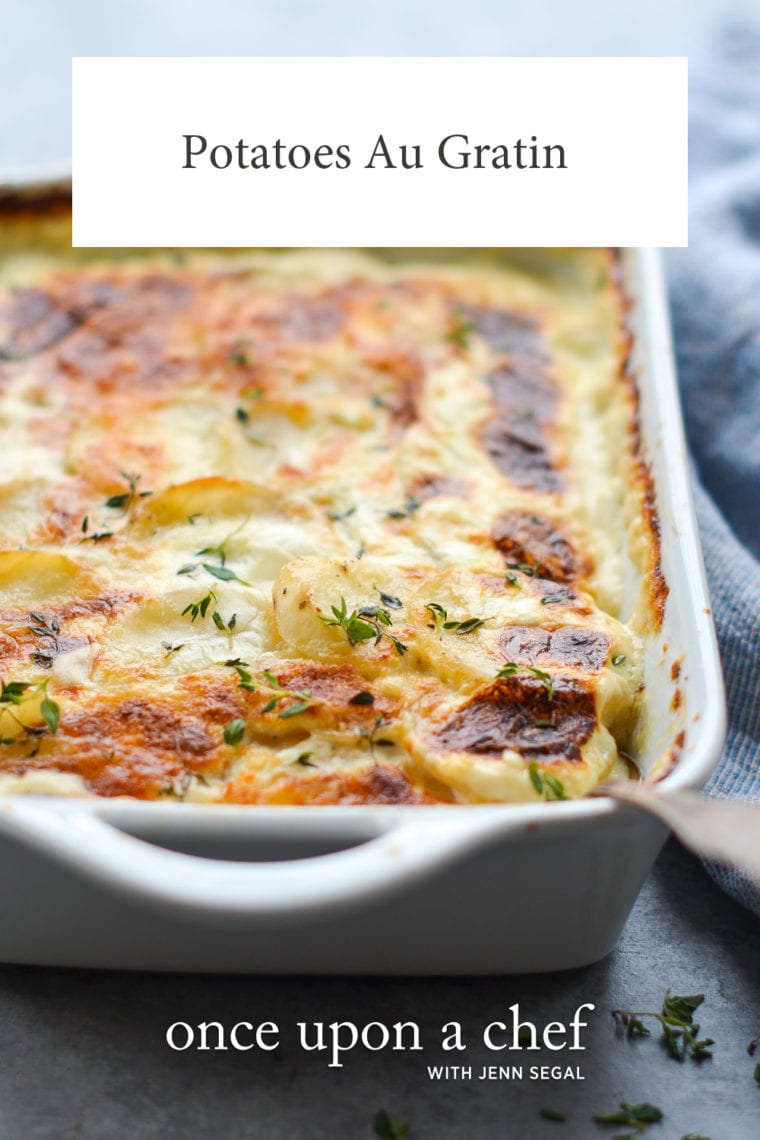
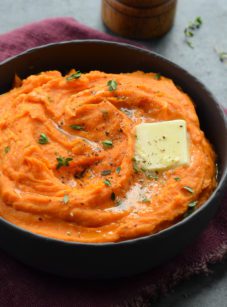
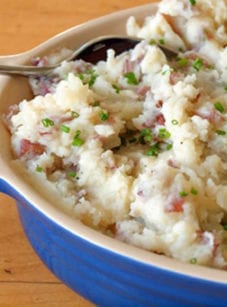
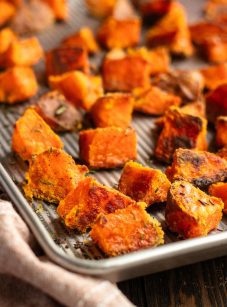
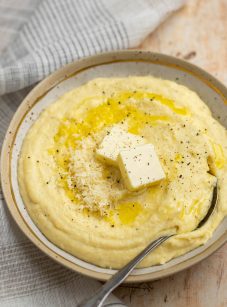
Love your recipes.
I am making a reverse sear slow cook prime rib for Christmas and can reward the potatoes while the beef rests before the 500 degree blast. Can I make potatoes in the morning and reheat?
Hi Carol, so glad you like the recipes! Unfortunately, this is not a dish that reheats very well. Sorry!
Can this be made with half and half or whole milk?
I don’t recommend it – sorry!
I am going to make your salmon with mustard and panko crust and it needs to be baked at 450 degrees. Can I do the potatoes at that temperature for a shorter time?
Hi Inga, I’d reduce the temperature to 400°F. The salmon will take a little longer, and the potatoes will not need as long. Hope you enjoy both!
We love your au gratin potatoes! We are required to make scalloped potatoes for a potluck. Think I could just throw some ham in the au gratin potatoes?
A few readers have mentioned that they’ve added ham to this, and that the moisture from the ham added a little bit too much moisture to the dish. If you want to try it, I’d reduce the cream to 2 cups. Hope everyone enjoys!